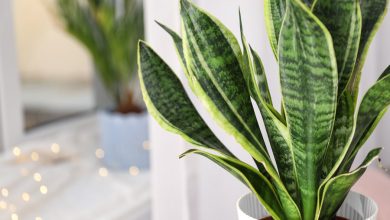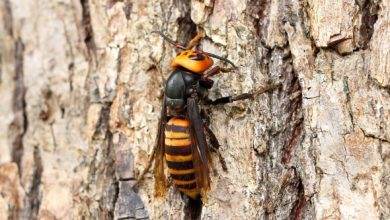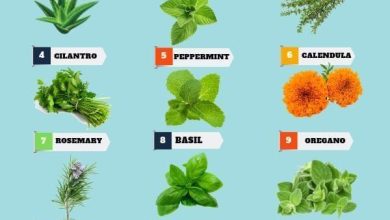Edible tuber names list

Tubers are thickened stems that some plants have. Thanks to them, they can survive the harshest periods even if the leaves dry out. They are also a great source of energy, essential for the resurgence of the plant, but not only that, but there are also several that are suitable for human consumption.
So if you want to try something different, write down these names of edible tubers that should not be missing in your kitchen.
List of tubers
There are many plants that produce tubers suitable for human consumption. If you want to know what they are, take a look:
Sweet potato

It comes from the Ipomoea batatas plant, a perennial vine native to the tropical regions of South America and Central America that produces brown tubers with yellowish pulp.
Tigernut

It is the name given to the tubers of Cyperus esculentus, a plant very similar to the Egyptian papyrus ( Cyperus papyrus ) that produces small tubers with a rounded shape at its roots.
Ginger

Ginger is a lively plant native to South Asia, being very common in India. Its scientific name is Zingiber officinale, and it is believed that it came to Europe from the East through the spice trade. Its tubers are consumed, as you may have guessed, as a spice, but also as an aperitif and even as an ingredient in many recipes.
Jicama

The jicama, pelenga or Mexican turnip is a climbing plant native to Mexico whose scientific name is Pachyrhizus erosus. Its tubers are more or less rounded, and are consumed in the same way as potatoes.
Cassava

Image – Wikimedia/ David Monniaux
Cassava, also called yucca, casabe or guacamota, is the name given to a perennial shrub native to America. Its scientific name is Manihot esculenta, and it produces elongated and edible tubers.
Potato

Potatoes are the best known and most cultivated tubers. They come from the Solanum tuberosum plant, an herb native to America from which only its tubers can be consumed, since all other parts are toxic.
Taro

It is a herbaceous native to India, Asia and Australia that belongs to the species Colocasia esculenta. Its leaves are really impressive, measuring 70cm long by 36cm wide. It produces edible tubers known as taro.
Jerusalem artichoke

This is how a sunflower native to America is known, whose scientific name is Helianthus tuberosus. In addition to being a great garden or pot plant, its tubers can be consumed without problems.
Yam

Yam is the name given to edible tubers to a series of species of the genus Dioscorea, which is distributed in America, Asia and Africa. The most cultivated are:
- Dioscorea alata: it is known as purple yam because of the color it has.
- Dioscorea bulbifera: produces aerial tubers.
- Dioscorea dumetorum: is the bitter yam.
- Dioscorea esculenta: it is the common yam. They say about its flavor that it is exquisite.
- Dioscorea opposita: it is known as the Chinese yam. It is small in size, but better resistant to cold.
What does it take to grow tubers?
If you want to grow plants that produce tubers you will need the following:
- Proper climate: in order to avoid wasting money in vain, it is important to make sure that the climate in the area where you live is suitable, especially if it is a plant that lives for several years (if it is annual it is not so much a problem, as long as there are about 6 months of temperatures that are around 10 degrees Celsius minimum and 35 degrees Celsius maximum). Thus, the Manihot esculenta, for example, will only live well outside if no frost ever occurs.
- Space: ideally, they should be planted in the ground, with soil rich in organic matter. Now, it can also be in large and deep pots, the more the better.
- Soil/ substrate: it must be rich in organic matter, and facilitate rapid water drainage.
- Orchard: it must be fertile, and have good drainage.
- Pot: fill with mulch or substrate for urban garden.
- Irrigation system: either by drip if they will be in the garden, or with a watering can if they will be growing in pots.
- Fertilizers: as they are tubers suitable for human consumption, we recommend fertilizing the plants with organic fertilizers, such as guano, compost or herbivorous animal manure.
Do you know other edible tubers?




